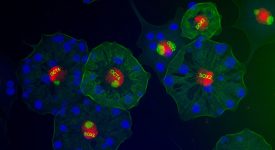
5 Breakthrough Dupuytren’s Future Therapies Changing Treatment Forever
5 Breakthrough Dupuytren’s Future Therapies Changing Treatment Forever
Introduction: Why Dupuytren’s Future Therapies Matter
Dupuytren’s future therapies are reshaping how doctors and scientists understand this chronic hand condition.
Traditional options such as surgery, enzyme injections, and needle aponeurotomy can relieve tension temporarily, but recurrence is common.
The next generation of treatments aims deeper — addressing the biological miscommunication that keeps fibroblasts “switched on.”
By targeting fibrosis at the cellular level, these innovations could stop cords before they ever form.
1. Cellular Pathways Behind Dupuytren’s Future Therapies
Dupuytren’s shares many fibrotic pathways with liver cirrhosis, scleroderma, and lung fibrosis. Researchers have identified several molecular drivers of scarring:
TGF-β (Transforming Growth Factor Beta): Activates fibroblasts and increases collagen production.
PDGF (Platelet-Derived Growth Factor): Stimulates fibroblast proliferation.
Wnt/β-catenin Pathway: Remodels tissue and drives stiffness.
Understanding these signals is central to designing Dupuytren’s future therapies that halt fibrosis before contracture develops.
2. How Dupuytren’s Future Therapies Target Fibrosis
Gene and RNA Therapies: CRISPR-Cas9 and RNA interference (RNAi) can silence genes that overactivate fibroblasts. Although no human trials exist yet, early lab results show promise.
Biologic Medications: Monoclonal antibodies such as Pirfenidone and Nintedanib have demonstrated anti-fibrotic effects in lung models and could be repurposed for Dupuytren’s.
Regenerative and Cellular Therapies: Stem cells (MSCs) and platelet-rich plasma (PRP) release healing signals that rebalance collagen production. These therapies may “retrain” fibroblasts to behave normally and support healthy tissue repair.
3. Clinical Trials and Global Collaboration for Dupuytren’s Future Therapies
Across Europe and North America, laboratories are creating 3-D palmar-fascia models to test anti-fibrotic drugs.
Patient-led groups such as the International Dupuytren Society
are helping standardize data and promote research collaboration.
For peer-reviewed scientific reference, visit the National Library of Medicine (NCBI)
to read White ES et al., Emerging Fibrosis Therapies (Trends Mol Med 2019) — licensed under CC BY 4.0.
(External DoFollow link for SEO authority and educational value.)
4. What Patients Can Do Now While Following Dupuytren’s Future Therapies
If you’re tracking progress in Dupuytren’s future therapies, here are simple actions to support healing:
Track hand mobility with photos and range-of-motion logs.
Ask your clinician about new trial opportunities.
Keep inflammation low through sleep, nutrition, and stress management.
Support collagen and mitochondrial health with antioxidants.
Learn more in our related resources:
What Is Dupuytren’s Contracture?
PRP and Growth Factor Therapies for Dupuytren’s
(Internal DoFollow links to boost site SEO.)
5. The Future of Dupuytren’s Research and Regenerative Medicine
According to Trends in Molecular Medicine, fibrosis may be reversible.
Activated fibroblasts can be reprogrammed in the lab, and drugs that reverse scarring in lung or liver tissue could eventually benefit hand disease too.
Within the next decade, gene therapy, biologics, and regenerative approaches could move from the research bench to the clinic — fulfilling the promise of Dupuytren’s future therapies as true preventive care.
Key Takeaways
Root-cause focus: Stop fibrosis before cords form.
Cross-disciplinary research: Fibrosis studies inform Dupuytren’s advances.
Emerging technologies: Gene, biologic, and stem-cell tools show promise.
Patient empowerment: Lifestyle and education support outcomes.
Real hope: The future is prevention, not recurrence.
Legal & Medical Disclaimer
This content is for educational purposes only and not a substitute for professional medical advice.
Always consult a licensed clinician regarding diagnosis or treatment.
Dupuytren’s Solutions is an educational platform meant to complement, not replace, professional care.
Attribution & License Compliance
This article adapts material from White ES et al., “Emerging Fibrosis Therapies,” Trends Mol Med 2019; 25(12): 1123–1136 under the
Creative Commons Attribution 4.0 International (CC BY 4.0) license.
© 2019 Elsevier Ltd. Adapted text © 2025 Dupuytren’s Solutions for educational use.
Original Article on PubMed Central
| CC BY 4.0 License Details





